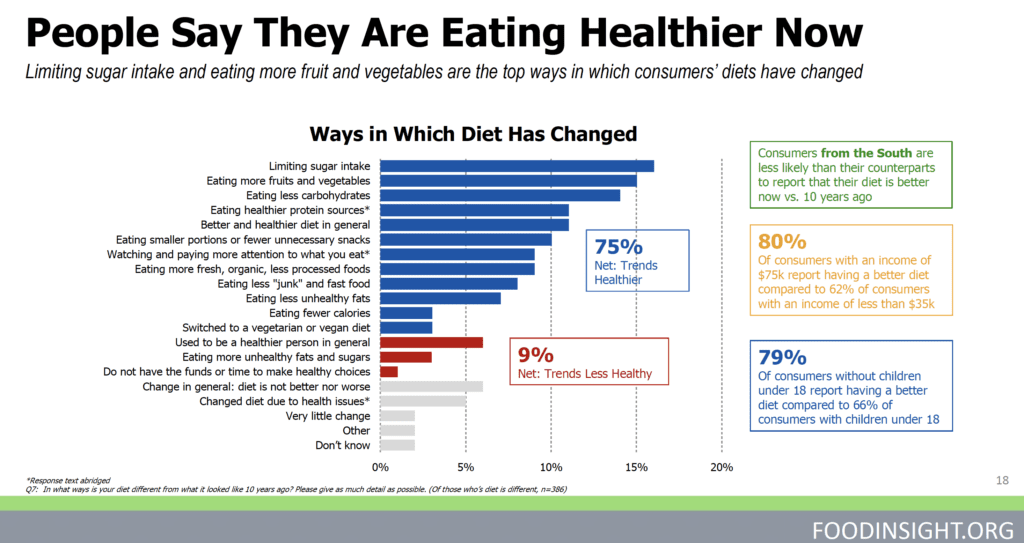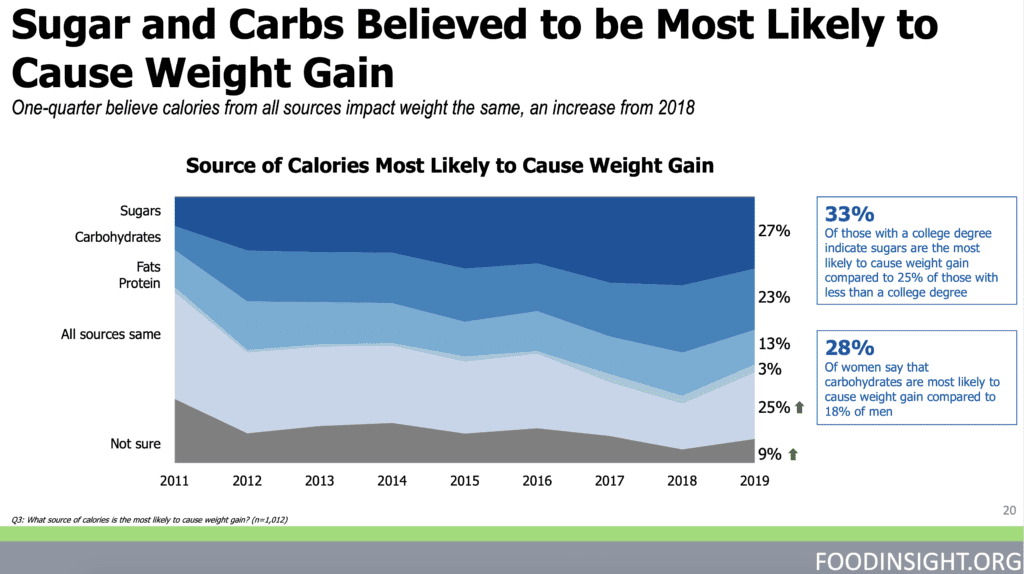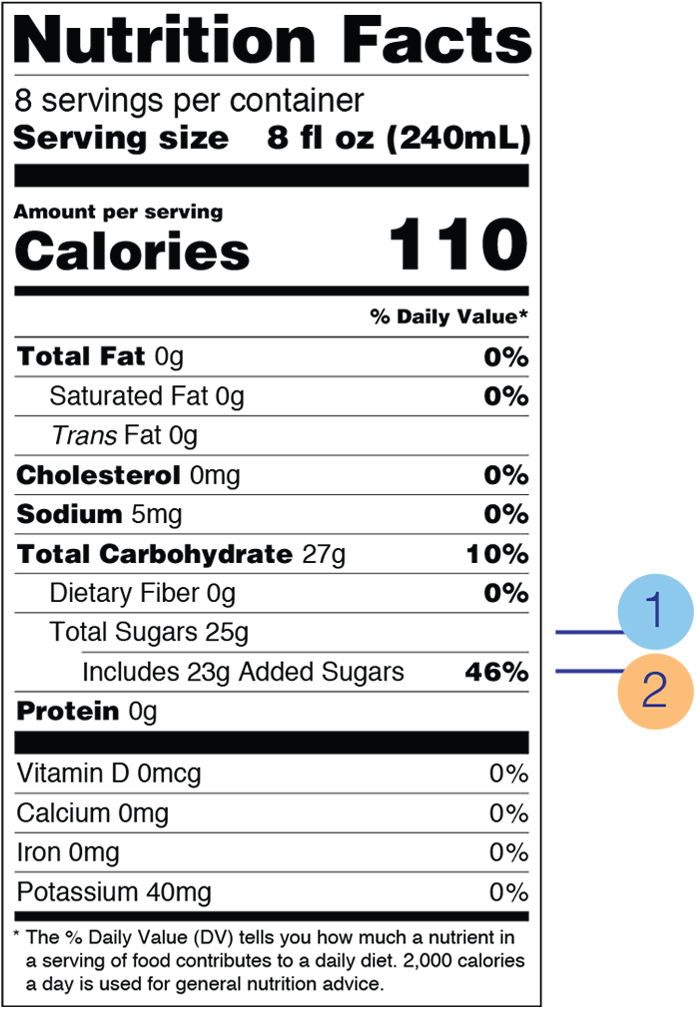Consumers Rank Reducing Sugar as the #1 Health Consideration: This is Why
Breaking Up With Sugar Is Hard To Do – But Possible
Limiting sugar is the #1 way Americans say they are eating healthier now.
Today’s consumer is hoping to tame that sweet tooth. Blame it on a COVID-induced focus on how to boost immunity. And, knowledge of the link that diet and exercise play in improving resistance to all diseases.
The sign of the times are all there:
- Diet goals centered on sugar reduction or sugar elimination
- A keen eye for interpreting nutrition labels
- A continued love/hate relationship with sugar.
A year before the nation faced these unprecedented times, there was continued proof that sugar was on the radar of Americans. The International Food Information Council Foundation 2019 Food and Health Survey in Spring 2019 revealed that “Limiting sugar intake” topped the list of ways that respondents said they are eating healthier now. “Eating more fruits and vegetables” and “Eating less carbohydrates” came in second and third place.
When asked the source of calories most likely to cause weight gain, 27% of the 1,012 respondents ages 18 to 80 surveyed named sugar as the guilty culprit. Carbohydrates ranked second at 23%. Diets discussions continue to be focused on what consumers don’t want in their food.
A survey by FONA International in August 2019 found that 56% of consumers reported consuming less sugar than a year before. Forty-two percent want to reduce the amount of sugar they eat. Why cut back on sugar? Weight loss is the primary reason for half of the respondents.
Way Too Much Of A Sweet Thing
The latest advice from the Scientific Report of the 2020 Dietary Guidelines Advisory Committee, released in July 2020, advised Americans to reduce their added sugar intake to less than 6% of total caloric intake. This is a big jump from the 2015-2020 Dietary Guidelines that recommended less than 10% of calories consumed per day come from added sugars.
The US Food and Drug Administration defines “added sugars” as “Sugars that are added during the processing of foods (such as sucrose or dextrose), foods packaged as sweeteners (such as table sugar), sugars from syrups and honey, and sugars from concentrated fruit or vegetable juices. They do not include naturally occurring sugars that are found in milk, fruits, and vegetables.”
The report noted “for Americans ages 1 year and older, average consumption of added sugars represent 13% of daily energy intake, meaning that most Americans consume diets that exceed current Dietary Guidelines recommendations.”
How Much Sugar Do We Actually Eat?
Just how much sugar Americans consume is staggering. The recommendations are 36 grams (no more than nine teaspoons) for men and 25 grams (no more than six teaspoons) for women. According to the American Heart Association:
- Adults consume an average of 77 grams of sugar per day
- American kids fare no better – ingesting 81 grams of sugar daily.
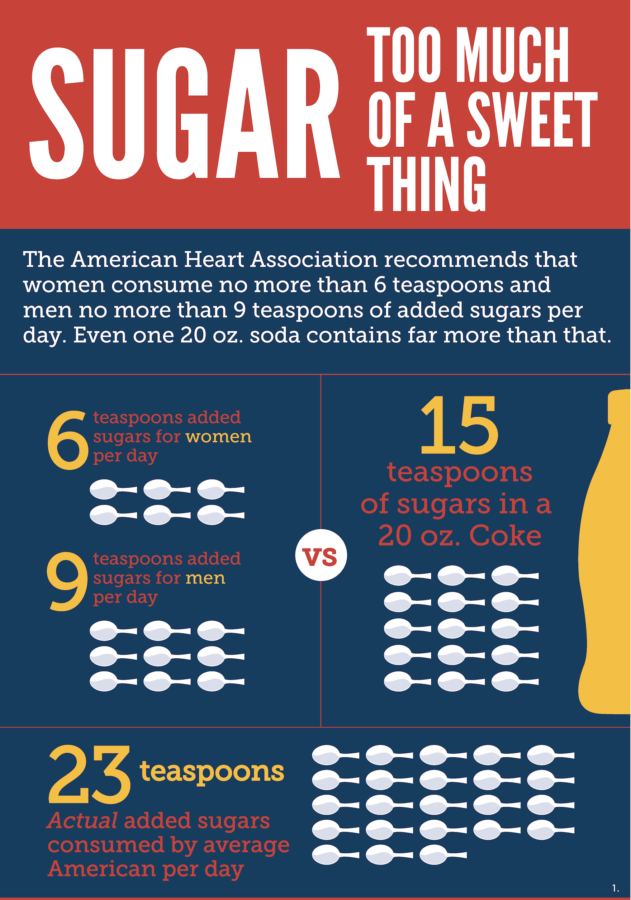 |
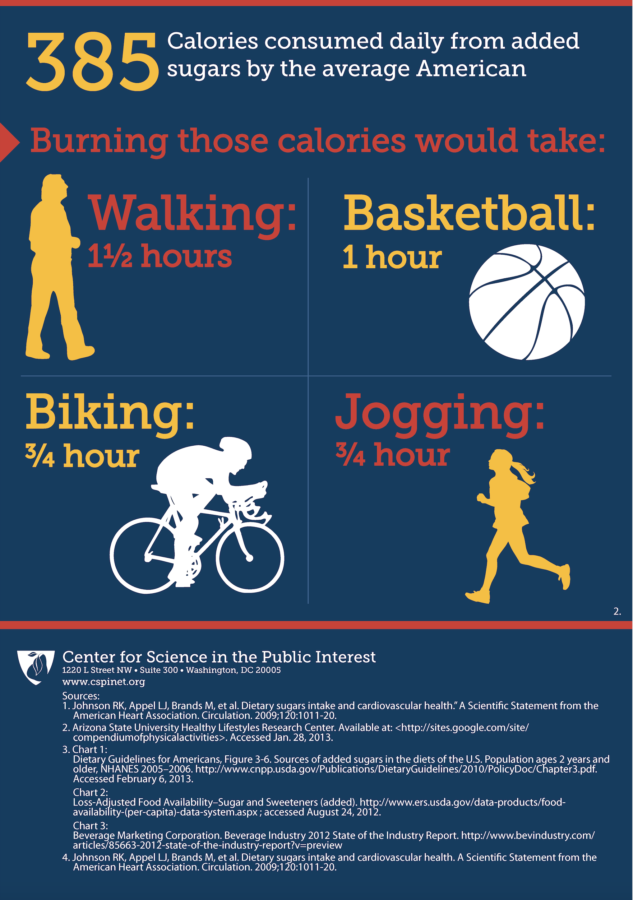 |
Which Foods Contain The Most Added Sugar?
SugarScience, an authoritative source for the scientific evidence about sugar and its impact on health developed by a team of health scientists from the University of California in San Francisco, says that 74% of packaged foods sold in supermarkets have added sugar from their manufacturers.
The Scientific Report of the 2020 Dietary Guidelines Advisory Committee stated that almost 70% of added sugars consumed come from five food categories
- Sweetened beverages, desserts and sweet snacks
- Coffee and tea (with their additions)
- Candy and sugars
- Breakfast cereals and bars.
The American Heart Association notes that 47% of all sugars are found in beverages:
- Soft Drinks – 25%
- Fruit Drinks – 11%
- Sports/Energy Drinks – 3%
- Coffee/Tea – 7%
Just one can of 12-ounce can of soda alone contains 8 teaspoons or 32 grams of sugar.
And, it’s no surprise that snacks and sweets at 31% are the next highest group of added sugars.
What is the Best Way To Reduce Sugar?
According to FONA, the top method of how Americans reduce sugar in their diet is substituting water for caloric beverages. Seventy-three percent of consumers opt this route while 57% eliminate certain foods/beverages. Giving up adding sugar to foods and beverages was selected by 35%, and 32% reduce the number of calories consumed each day.
The study also revealed that 36% use the Nutrition Facts label to choose foods and beverages with less sugar. According to the NPD Group’s Health Aspirations and Behavioral Tracking Service, almost 90% do read the federal government’s updated nutrition facts. And, 57% of those look for sugars, while 45% search for calories.
A Sweet Addition To The New Nutrition Label
The FDA finalized changes to nutrition facts label to assist consumers in maintaining healthy dietary practices. With the new nutrition facts label, which went into effect in January, it’s even easier for consumers to gauge their sugar consumption. The category of “Total Sugars” remains. However, now manufacturers are required to also list “Added Sugars”.
Added sugars include:
- Sugar added during the processing of foods (sucrose, dextrose, etc.)
- Food packaged as sweeteners (table sugar)
- Sugars from syrups and honey
- Sugars from concentrated fruit or vegetable juices
To 73% of consumers surveyed by FONA, a “no sugar added” claim is important.
63% reported “I will re-think purchasing the product now that I know the grams of sugar”.
A complete break-up with sugar consumption may not be on the horizon, but consumers are certainly continuing their relationship with the sweet stuff with eyes wide open.
With the addition of our new line of Zero Sugar Bases, Cook’s Delight® provides an option for professional chefs wanting to control the sugar in their culinary creations. Available in chicken, beef and vegetable (both organic and conventional) varieties, the bases are gluten free with no MSG, no Big 8 allergens and no trans fats. These clean label products conform to the guidelines of many popular zero sugar diets as well as KETO, vegan and low carb.
Submit a request for your sample. These bases are a perfect addition to your distribution product line, especially if healthcare providers are a key demographic in your customer base.

